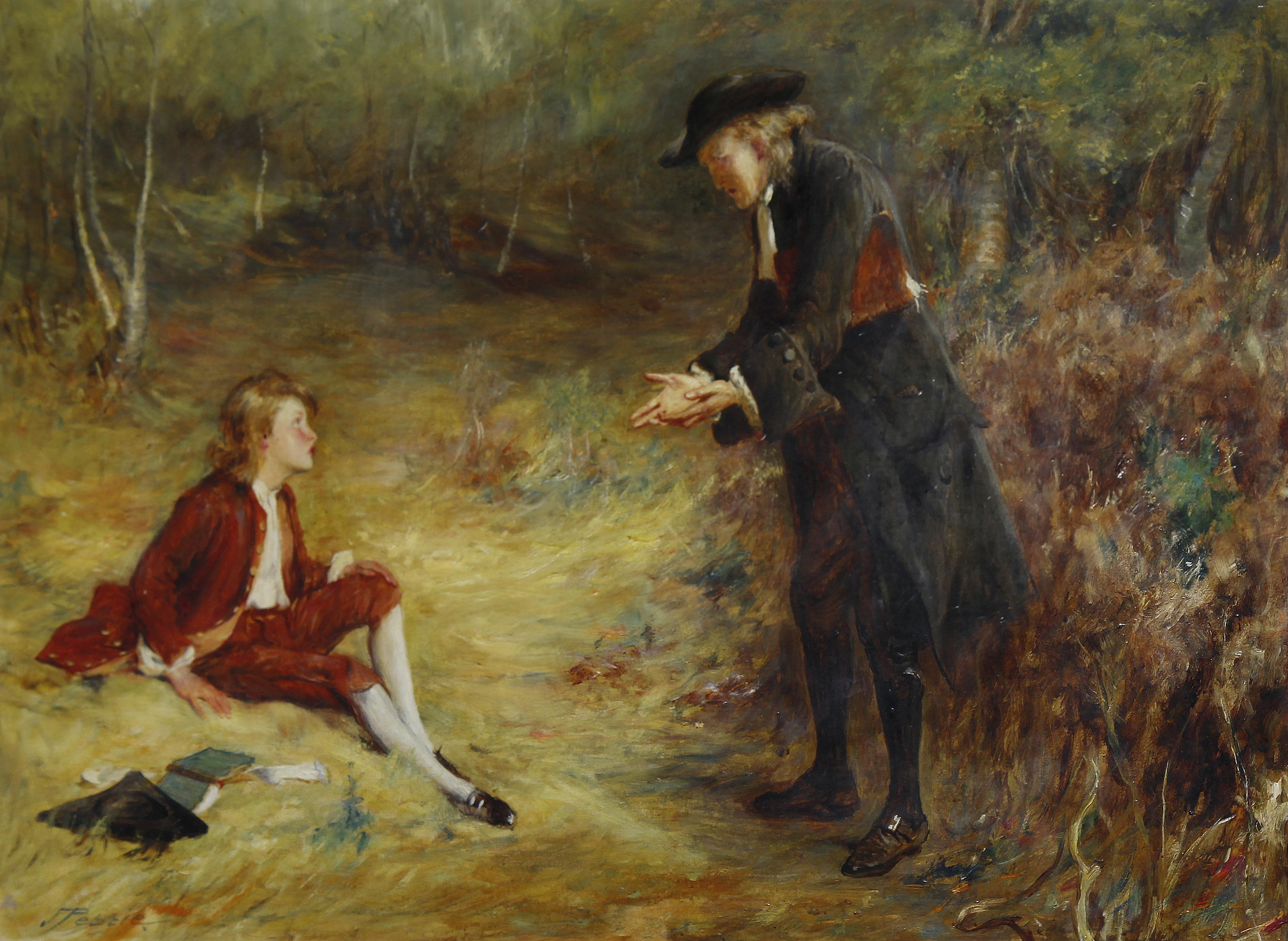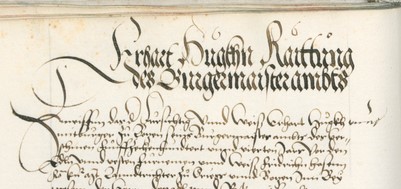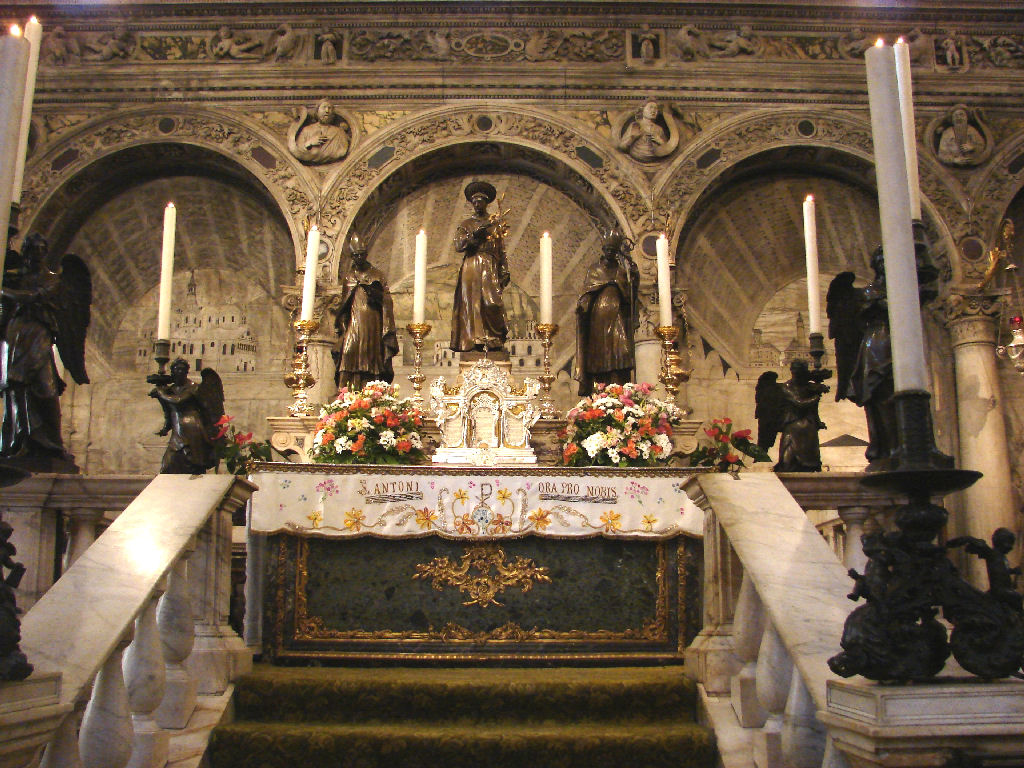|
Peter Canisius
Peter Canisius (; 8 May 1521 – 21 December 1597) was a Dutch Jesuit priest known for his strong support for the Catholic faith during the Protestant Reformation in Germany, Austria, Bohemia, Moravia, Switzerland and the British Isles. The restoration of the Catholic Church in Germany is largely attributed to the work there of the Jesuits, which Canisius led. He is venerated in the Catholic Church as a saint and as a Doctor of the Church. Life He was born in 1521 in Nijmegen in the Duchy of Guelders, which, until 1549, was part of the Habsburg Netherlands within the Holy Roman Empire and is now the Netherlands. His father was a wealthy burgermeister, Jacob Kanis. His mother, Ægidia van Houweningen, died shortly after Peter's birth. He was sent to study at the University of Cologne, where he earned a master's degree in 1540, at the age of 19. [...More Info...] [...Related Items...] OR: [Wikipedia] [Google] [Baidu] |
Peter Kániš
Peter Kániš (died 1421) was a priest and theologian during the Bohemian reformation, being the chief spokesman for the Taborites. Along with other Taborites, he was burned at the stake for heresy by Jan Žižka, who wanted to control the most radical parts of the reformation. Kániš advocated the postponement of baptism until the age of thirty over infant baptism. He took a memorialist view of the Eucharist. Bishop Nicholas Biskupec wrote a treatise against him defending the real presence of Christ in the Eucharist. A few of those led by Kániš and Martin Húska would later form the Adamite Adamite is a zinc arsenate hydroxide mineral, Zn2 As O4O H. It is a mineral that typically occurs in the oxidized or weathered zone above zinc ore occurrences. Pure adamite is colorless, but usually it possess yellow color due to Fe compoun ... sect. References Christian radicalism 1421 deaths Year of birth unknown {{catimprove, date=April 2023 ... [...More Info...] [...Related Items...] OR: [Wikipedia] [Google] [Baidu] |
Bohemia
Bohemia ( ; ; ) is the westernmost and largest historical region of the Czech Republic. In a narrow, geographic sense, it roughly encompasses the territories of present-day Czechia that fall within the Elbe River's drainage basin, but historically it could also refer to a wider area consisting of the Lands of the Bohemian Crown ruled by the List of Bohemian monarchs, Bohemian kings, including Moravia and Czech Silesia, in which case the smaller region is referred to as Bohemia Proper as a means of distinction. Bohemia became a part of Great Moravia, and then an independent principality, which became a Kingdom of Bohemia, kingdom in the Holy Roman Empire. This subsequently became a part of the Habsburg monarchy and the Austrian Empire. After World War I and the establishment of an History of Czechoslovakia (1918–1938), independent Czechoslovak state, the whole of Bohemia became a part of Czechoslovakia, defying claims of the German-speaking inhabitants that regions with German ... [...More Info...] [...Related Items...] OR: [Wikipedia] [Google] [Baidu] |
Preaching
A sermon is a religious discourse or oration by a preacher, usually a member of clergy. Sermons address a scriptural, theological, or moral topic, usually expounding on a type of belief, law, or behavior within both past and present contexts. Elements of the sermon often include Expository preaching, exposition, exhortation, and practical application. The act of delivering a sermon is called preaching. In secular usage, the word ''sermon'' may refer, often disparagingly, to a lecture on morals. In Christianity, Christian practice, a sermon is usually preached to a church (congregation), congregation in a place of worship, either from an elevated architectural feature, known as a pulpit or an ambon (liturgy), ambo, or from behind a lectern. The word ''sermon'' comes from a Middle English word which was derived from Old French, which in turn originates from the Latin word meaning 'discourse.' A ''sermonette'' is a short sermon (usually associated with television broadcasting, as ... [...More Info...] [...Related Items...] OR: [Wikipedia] [Google] [Baidu] |
Peter Faber
Peter Faber, SJ (, ) (13 April 1506 – 1 August 1546) was a Savoyard Catholic priest, theologian and co-founder of the Society of Jesus, along with Ignatius of Loyola and Francis Xavier. Pope Francis announced his canonization in 2013. Life Early life Faber was born in 1506 to a peasant family in the village of Villaret, in the Duchy of Savoy (now Saint-Jean-de-Sixt in the French Department of Haute-Savoie). As a boy, he was a shepherd in the high pastures of the French Alps. He had little education, but a remarkable memory; he could hear a sermon in the morning and then repeat it verbatim in the afternoon for his friends. Two of his uncles were Carthusian priors. At first, he was entrusted to the care of a priest at Thônes and later to a school in the neighboring village of La Roche-sur-Foron. In 1525, Faber went to Paris to pursue his studies. He was admitted to the Collège Sainte-Barbe, the oldest school in the University of Paris, where he shared his lodgings with Fran ... [...More Info...] [...Related Items...] OR: [Wikipedia] [Google] [Baidu] |
Master's Degree
A master's degree (from Latin ) is a postgraduate academic degree awarded by universities or colleges upon completion of a course of study demonstrating mastery or a high-order overview of a specific field of study or area of professional practice. A master's degree normally requires previous study at the bachelor's degree, bachelor's level, either as a separate degree or as part of an integrated course. Within the area studied, master's graduates are expected to possess advanced knowledge of a specialized body of theoretical and applied topics; high order skills in analysis [...More Info...] [...Related Items...] OR: [Wikipedia] [Google] [Baidu] |
University Of Cologne
The University of Cologne () is a university in Cologne, Germany. It was established in 1388. It closed in 1798 before being re-established in 1919. It is now one of the largest universities in Germany with around 45,187 students. The University of Cologne is a member of the U15 (German universities), German U15 association of major research-intensive universities and was a university of excellence as part of the German Universities Excellence Initiative from 2012 to 2019. It is constantly ranked among top 20 German universities in the world rankings. The University of Cologne has 5 Clusters of Excellence: CECAD Cluster of Excellence for Aging Research, Cluster of Excellence ECONtribute: Markets & Public Policy, CEPLAS Cluster of Excellence for Plant Sciences, ML4Q Cluster of Excellence Matter and Light for Quantum Information and DYNAVERSE Cluster of Excellence. As of 2025, among its notable alumni, faculty and researchers are 5 List of Nobel laureates, Nobel Laureates, 11 Le ... [...More Info...] [...Related Items...] OR: [Wikipedia] [Google] [Baidu] |
Burgermeister
Burgomaster (alternatively spelled burgermeister, ) is the English form of various terms in or derived from Germanic languages for the chief magistrate or executive of a city or town. The name in English was derived from the Dutch . In some cases, burgomaster was the title of the head of state and head of government of a sovereign (or partially or de facto sovereign) city-state, sometimes combined with other titles, such as Hamburg's First Mayor and President of the Senate). Contemporary titles are commonly translated into English as ''mayor''. Historical use * The title "burgermeister" was first used in the early 13th century. * In history (sometimes until the beginning of the 19th century) in many free imperial cities (such as Bremen, Hamburg, Lübeck, etc.) the function of burgomaster was usually held simultaneously by three persons, serving as an executive college. One of the three being burgomaster in chief for a year (called in some cases in ; in ''presiding burg ... [...More Info...] [...Related Items...] OR: [Wikipedia] [Google] [Baidu] |
Netherlands
, Terminology of the Low Countries, informally Holland, is a country in Northwestern Europe, with Caribbean Netherlands, overseas territories in the Caribbean. It is the largest of the four constituent countries of the Kingdom of the Netherlands. The Netherlands consists of Provinces of the Netherlands, twelve provinces; it borders Germany to the east and Belgium to the south, with a North Sea coastline to the north and west. It shares Maritime boundary, maritime borders with the United Kingdom, Germany, and Belgium. The official language is Dutch language, Dutch, with West Frisian language, West Frisian as a secondary official language in the province of Friesland. Dutch, English_language, English, and Papiamento are official in the Caribbean Netherlands, Caribbean territories. The people who are from the Netherlands is often referred to as Dutch people, Dutch Ethnicity, Ethnicity group, not to be confused by the language. ''Netherlands'' literally means "lower countries" i ... [...More Info...] [...Related Items...] OR: [Wikipedia] [Google] [Baidu] |
Holy Roman Empire
The Holy Roman Empire, also known as the Holy Roman Empire of the German Nation after 1512, was a polity in Central and Western Europe, usually headed by the Holy Roman Emperor. It developed in the Early Middle Ages, and lasted for a millennium until its Dissolution of the Holy Roman Empire, dissolution in 1806 during the Napoleonic Wars. For most of its history the Empire comprised the entirety of the modern countries of Germany, Czechia, Austria, the Netherlands, Belgium, Switzerland, Slovenia, and Luxembourg, most of north-central Italy, and large parts of modern-day east France and west Poland. On 25 December 800, Pope Leo III crowned the Frankish king Charlemagne Roman emperor, reviving the title more than three centuries after the fall of the Western Roman Empire in 476. The title lapsed in 924, but was revived in 962 when Otto I, OttoI was crowned emperor by Pope John XII, as Charlemagne's and the Carolingian Empire's successor. From 962 until the 12th century, the empire ... [...More Info...] [...Related Items...] OR: [Wikipedia] [Google] [Baidu] |
Saint
In Christianity, Christian belief, a saint is a person who is recognized as having an exceptional degree of sanctification in Christianity, holiness, imitation of God, likeness, or closeness to God in Christianity, God. However, the use of the term ''saint'' depends on the context and Christian denomination, denomination. In Anglican Communion, Anglican, Oriental Orthodox, and Lutheranism, Lutheran doctrine, all of their faithful deceased in Heaven are considered to be saints, but a selected few are considered worthy of greater honor or emulation. Official Ecclesiastical polity, ecclesiastical recognition, and veneration, is conferred on some denominational saints through the process of canonization in the Catholic Church or glorification in the Eastern Orthodox Church after their approval. In many Protestant denominations, and following from Pauline usage, ''saint'' refers broadly to any holy Christian, without special recognition or selection. While the English word ''saint'' ... [...More Info...] [...Related Items...] OR: [Wikipedia] [Google] [Baidu] |
Veneration
Veneration (; ), or veneration of saints, is the act of honoring a saint, a person who has been identified as having a high degree of sanctity or holiness. Angels are shown similar veneration in many religions. Veneration of saints is practiced, formally or informally, by adherents of some branches of all major religions, including Christianity, Judaism,"Veneration of saints is a universal phenomenon. All monotheistic and polytheistic creeds contain something of its religious dimension... " Hinduism, Islam, Buddhism and Jainism. Within Christianity, veneration is practiced by groups such as the Catholic Church, Eastern Orthodox Church, and the Oriental Orthodox Church, all of which have varying types of canonization or glorification processes. In Catholicism and Orthodoxy, veneration is shown outwardly by respectfully kissing, bowing or making the sign of the cross before a saint's icon, relics, or statue, or by going on pilgrimage to sites associated with saints. The Lutheranis ... [...More Info...] [...Related Items...] OR: [Wikipedia] [Google] [Baidu] |
Catholic Church In Germany
The Catholic Church in Germany () or Roman Catholic Church in Germany () is part of the worldwide Catholic Church in communion with the Pope, assisted by the Roman Curia, and with the German bishops. The current "Speaker" (i.e., Chairman) of the episcopal conference is Georg Bätzing, Bishop of the Roman Catholic Diocese of Limburg. It is divided into 27 dioceses, 7 of them with the rank of metropolitan sees. Growing rejection of the Church has had its impact in Germany; nevertheless, 28.5% of the total population remain Roman Catholic (23.9 million people as of December 2022). Before the 1990 reunification of Germany by accession of the former German Democratic Republic (or East Germany), Roman Catholics were 42% of the population of West Germany. Religious demographic data is relatively accessible in Germany because, by law, all Christian taxpayers must declare their religious affiliation so that the church tax can be deducted by the state and passed on to the relevant c ... [...More Info...] [...Related Items...] OR: [Wikipedia] [Google] [Baidu] |






